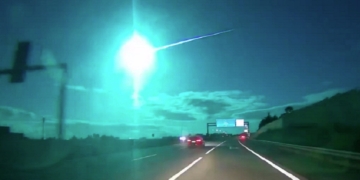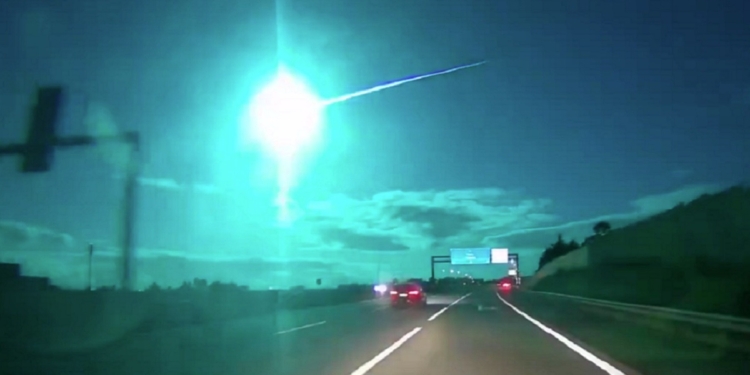It was just another Saturday night on the Iberian Peninsula.
Until it became something very special.
A meteor streaked through the night over Spain and Portugal, turning the entire sky blue.
Multiple videos hit social media.
🚨🤩 Meteor streaking across the sky in Portugal pic.twitter.com/kXAbY7dsue
— Quick News Alerts (@QuickNewsAlerts) May 19, 2024
JUST IN: Meteor spotted in the skies over Spain and Portugal.
This is insane.
Early reports claim that the blue flash could be seen darting through the night sky for hundreds of kilometers.
At the moment, it has not been confirmed if it hit the Earth’s surface however some… pic.twitter.com/PNMs2CDkW9
— Collin Rugg (@CollinRugg) May 19, 2024
The European Space Agency posted its video to X, saying that its “fireball camera in Cáceres, Spain, spotted this stunning meteor last night! Our Planetary Defence Office are currently analysing the size and trajectory of the object to assess the chance that any material made it to the surface.”
In an update posted to X, it reported “It appears that this object was a small piece of a comet. We estimate that it flew over Spain and Portugal travelling at ~45 km/s before burning up over the Atlantic Ocean at an altitude of ~60 km.”
☄️😍 ESA’s fireball camera in Cáceres, Spain, spotted this stunning meteor last night!
Do you think meteors are interesting?Our Planetary Defence Office are currently analysing the size and trajectory of the object to assess the chance that any material made it to the surface.
Credit: ESA/PDO/AMS82 – AllSky7 pic.twitter.com/gSU4unncQW
— ESA Operations (@esaoperations) May 19, 2024
Forty-five kilometers per second converts to a speed that tops 100,000 mph.
“The likelihood of any meteorites being found is very low,” the agency reported.
A report in the New York Post citing a Spanish newspaper quoted astronomer Josep María Trigo as estimating the meteor was only 8 to 12 inches in diameter.
Another incredible view of the meteor/fireball last night seen from Cádiz in Spain ☄️🤩pic.twitter.com/vVGmnqlulN
— Volcaholic 🌋 (@volcaholic1) May 19, 2024
Although a meteor show like that of Saturday night is rare, meteors are not, according to NASA.
“Scientists estimate that about 48.5 tons (44 tonnes or 44,000 kilograms) of meteoritic material falls on Earth each day,” the space agency states on its website.
“Almost all the material is vaporized in Earth’s atmosphere, leaving a bright trail fondly called “shooting stars.” Several meteors per hour can usually be seen on any given night,” NASA wrote.
“Most space rocks smaller than a football field will break apart in Earth’s atmosphere. Traveling at tens of thousands of miles per hour, the object disintegrates as pressure exceeds the strength of the object, resulting [in] a bright flare. Less than 5% of the original object usually makes it down to the ground.”
This article appeared originally on The Western Journal.


























 Continue with Google
Continue with Google